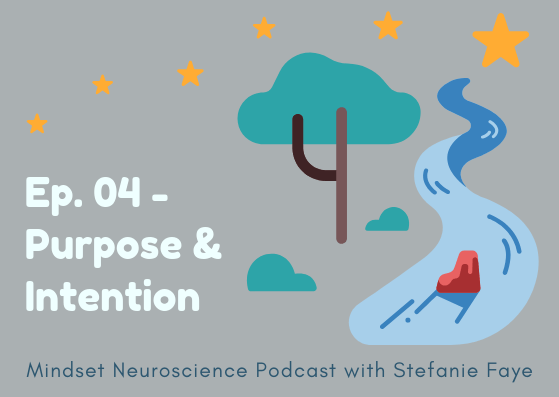Although childhood trauma is shown to negatively impact brain development, learning, memory and behaviors in ways similar to post traumatic stress disorder (PTSD), if you look up ‘PTSD’, you’ll find many articles that only talk about it as a ‘disorder that occurs after experiencing a shocking, scary or dangerous event.’ You’ll often see the word ‘event’ as a singular noun.
What you don’t always read is that PTSD symptoms also occur in people who have had recurring, traumatic conditions and experiences, particularly during childhood – something that many more people go through than most of us realize.
Even if you have only experienced safe, nurturing conditions, understanding childhood trauma will give you insight into human behavior to a degree you’ve likely never experienced (Oprah recently acknowledged how these insights changed her life). Here are a 7 things you need to know about the connection between childhood trauma and PTSD (that are often excluded from the conversation):
#1) PTSD is not just about a one-time event, or only about flashbacks.
One aspect of PTSD is related to a concept called neuroception – sensory-based, implicit, ‘body memories’ (more about this in the next section) that do not follow the same process as other types of memory that gets stored when we are not in high-stress situations (Porges, 2011).
These unconscious ‘body memories’ make it hard for sufferers of childhood trauma and PTSD to have intimate relationships because they can’t control (and don’t know) which cues will suddenly trigger explosive anger, rage, withdrawal, hyper-activity, or ’emotional oversharing’ and desperate attempts to engage a connection with someone. This is why it is so disruptive to their relationships, careers, and daily lives.
#2) PTSD has a wide spectrum: childhood trauma has not been officially acknowledged
An article in Time and The UK Telegraph claimed that “Tetris can protect soldiers from debilitating PTSD disorder”. This is an incomplete picture. The researchers studied people who had been in an accident. To repeat, PTSD is not just something that happens to people who go through a one-time event. Trauma can be something that happens to someone over and over again – sometimes in their own home or community.
Contrary to what many mainstream psychologists will tell you, PTSD is not just what is included in the ‘bible’ of the American Psychiatric Association: the Diagnostic Statistics Manual, the ‘DSM’.
A bit of background: the diagnosis of PTSD emerged on the scene (after much resistance) to explain what was happening to soldiers coming home from the Vietnam war (Van der Kolk, 2014). But PTSD symptoms have also been recognized in people who suffer abuse and trauma especially during childhood, something called ‘developmental or complex trauma’.
(An important side note: many statistics or mentions of PTSD leave developmental trauma out because, even after decades of rigorous research, the DSM committee has rejected developmental trauma as a diagnosis. The DSM, by the way, is a multi-million dollar revenue-producer that all psychologists and psychiatrists are required to purchase. Instead of looking at causes of the symptoms, the DSM categorizes developmental trauma symptoms into a smorgasbord of diagnoses like ‘emotional dysregulation disorder’ or ‘oppositional defiant disorder’.) This makes it easier to prescribe medication. Acknowledging the roots of trauma symptoms would mean that other work needs to be done to resolve it. There is no ‘quick fix’, which makes that route to healing much less appealing to many people.
According to childhood trauma specialist Dr. Bruce Perry, many people ask the wrong question that avoids getting to the root of many people’s challenges. Similar to the DSM, the question most often asked is “what’s wrong with that person”, rather than “what happened to that person?”
Someone who has endured childhood trauma will likely go through a dozen or so different ‘DSM diagnoses’ with all the corresponding medication, and never experience a long-term reduction in their symptoms, such as uncontrolled, unpredictable rage or depression (Van Der Kolk, 2014).
You can’t prescribe medication to ‘get rid of’ someone’s childhood trauma. It’s more commercially viable to list symptoms that group together in a diagnosis that can be ‘medicated’.
Much of these other types of trauma happen repeatedly and at home or in the presence of someone who is familiar. The symptoms of childhood trauma are highly similar to PTSD (Van Der Kolk, 2014).
Using the PTSD label often excludes massive amounts of the population who also suffer from various types of trauma and their related challenges (such as uncontrollable flashbacks and explosive fits of rage and aggression). Many articles about PTSD often only include war, accident, natural disaster or tragic event survivors, and exclude developmental, recurring or adversity-related trauma. Most people have no idea how much of this type of trauma occurs on a daily basis around the world, including in the US.
PTSD and Developmental or Childhood Trauma affects ALL OF US. Even if all we have known is safe and nurturing relationships, there’s a very high chance we are interacting with others who have endured trauma and don’t know how to regulate themselves.
#3) The Body Remembers
We’re putting so much focus on the role of the mind and brain without acknowledging that having a physical body is part of the human experience.
Part of what we now know about trauma is that “the body keeps the score” (Bessel Van Der Kolk,2014) through a process called ‘neuroception’ (coined by Stephen Porges,). Neuroception is different than perception – which allows stimulus from our environment to enter our awareness. It’s different than interoception – which is our awareness of the physiological sensations in our body. (Porges, 2014).
Neuroception is entirely unconscious. Any cue that was around during the traumatic event- a smell, a song, a look on someone’s face, an abrupt bang -all of those become ‘implicit memories’. During traumatic events, two key areas of the brain are less accessible to us: the prefrontal cortex and the hippocampus. We need those areas to create sequenced memories – to know that something happened in the past, and to be able to retrieve or suppress them.
Implicit, or ‘body memories’ are not under our control. Any cue similar to a cue that was present during the threat can, through neuroception, trigger massive, unconscious bodily reactions controlled by our defensive nervous system.
What people who suffer from childhood trauma and PTSD are experiencing is their bodies physiologically “telling” them that the threat is happening NOW. This threat is not experienced as a ‘memory’ from the past.
This mechanism sounds like a bad idea, but is in fact a highly adaptive bodily response to protect us from the overwhelm of trauma and tragedy (Van der Kolk, 2014). In fact, people who learn that their body’s response to a threat was not something going ‘wrong’ but in fact an adaptive response increase their sense of self-compassion, which can begin the path to healing (Porges, 2017). It becomes maladaptive when it stays stored within us and gets unconsciously triggered (through neuroception) when there is no actual danger.
Because the hippocampus and prefrontal cortex are not accessible during a traumatic event, it also means asking a person who has experienced trauma to talk or write about the event is asking that person to attempt to use features of the brain to re-assemble fragments and sensations and stimulus that was not stored in their mind in the way an explicit memory was. An explicit memory is something we can recall or suppress when we want. You can remember the names of the US states, or a phone number, etc., using explicit memory – which requires the hippocampus to register it as a sequenced memory.
#4) Talk Therapy Doesn’t Always Do Enough to Help Trauma Survivors
Implicit memory, or body memory, is neuroceptive information stored in your body. Talk therapy does not always help a survivor of trauma release their stored body memories in order to separate what happened as the past because it perpetuates the mental narrative our brain creates to explain why it happened. That verbal narrative can keep a person from releasing the memory from the past.
Effective trauma-informed care usually includes an element of mind-brain-body integration – meaning exercises that include body movement, art, music, meditation to bring a person ‘back into their body’, back into the present moment, and truly sitting with feelings – without talking. Noticing what comes up, and allowing ourselves to feel and release.
One key to healing through trauma is by becoming more present. We can do this by getting more in tune with our ‘feelings’, rather than the psychology-based narratives of ’emotions’ (I talk about this in my podcast Episode 5 on self-regulation.)
(This is likely how something like Tetris study mentioned above has a benefit. It keeps the person from ‘drifting away’ or dissociating, by bringing them back into the present moment.)
People who suffer from PTSD or developmental trauma symptoms need, among other things, increased ability to recognize physiological sensations in their body (interoception) and present-moment awareness, as well as self-compassion. Sensorimotor release – through specialized therapy, can be one avenue for these processes. Movement and anything that can keep them safely in the present moment (such as art, dance, yoga, mindful breathing, singing, playing a musical instrument) are all things that are showing a promising trend in research.
#5) Face-to-face intimacy can re-wire the brain
With the right people, creating safe moments of face-to-face interaction, and eventually touch, and eventually intimacy – are also key components to helping people who have endured trauma and tragedy become able to be present with another person and regulate their internal state to a point of ‘safety’. Those are examples of ‘co-regulation’ – the biologically imperative mechanism people (and other mammals) use to down-regulate their mobilizing defense systems, and recruit the social engagement system that allows for our uniquely human parts of the brain and our socially connecting systems to be recruited at the same time.
Co-regulation helps us truly be present with another human being. We need this type of presence with other people to thrive. (Read: Stephen Porges, The Polyvagal Theory: Neurophysiological foundations of emotions, attachment, communication and self-regulation.)
Using a video game – or even an art canvas for that matter – are examples of self-regulation, which are also important, but they are ‘object-dependent’ self-regulation. The most powerful (and brain circuitry-altering) methods of self-regulation are “top-down” processes that engage the mind in ways that do not rely on a device or outside stimulus. (Goleman & Davidson, 2017). According to trauma-informed therapists, secure relationships with people we can trust, who will allow us to experience our feelings without judging, shaming or withdrawing are another pillar to healing.
#6) “Mind Technologies” are our most powerful tool for creating long-term structural changes in the brain
Our minds become more capable of regulating our internal state when we are able to do it anywhere, anytime, without any kind of apparatus. It’s not to say we can’t use external gadgets and for some, this might be the best option – but we should also be open to ‘mind-based technologies’ such as mindfulness and meditation. There’s a reason they have been practiced by people for millennia – they are not quick fixes, and there’s plenty of research to back up how these mind-based techniques can lead to deep, long-term structural changes to improve a sense of well-being and healing. (the list of research is too long to mention, but a most recent book that is relevant is Altered Traits by Daniel Goleman and Richard Davidson).
Both self-regulation and co-regulation are needed for us to function at our highest capacity (Porges, 2011). We need rhythms of healthy aloneness, combined with reciprocal, live, safe interaction with other humans, in order to optimize our most evolved systems for flexible problem-solving, learning, nurturing and healing. These co-regulating and self-regulating practices are an important aspect of trauma-informed care and education.
#7) Trauma informed care and education should be mandatory for everyone
Trauma informed care and education should be on everyone’s radar at this point – whether you are an educator, community leader, even business innovator – understanding trauma, especially childhood trauma will help you understand human behavior in general. Trauma informed care is about accessing the plasticity of the human brain to help us move from primitive reflexes to using our most intelligent, flexible and creative brain architecture.
It focuses on research and practices that connect us much more deeply and intimately with each other, and encourages us to tune in to the intelligence of our body and senses: touching and feeling (feeling our physiological sensations, rather than the narrative we use to describe ’emotions’) are biological imperatives for building up creative, flexible brain architecture and are also the keys to healing PTSD.
We all need to become more ‘trauma-informed’ in order to solve humanity’s greatest challenges – challenges that REQUIRE human connection, intimacy and trust – three things that are dangerously lacking in many people’s lives.
References:(several of these books are on my MUST-read list for 2018).
Bessel Van Der Kolk, MD., The Body Keeps the Score, 2014.
Bruce Perry, Child Trauma Academy – Watch CTA training videos



